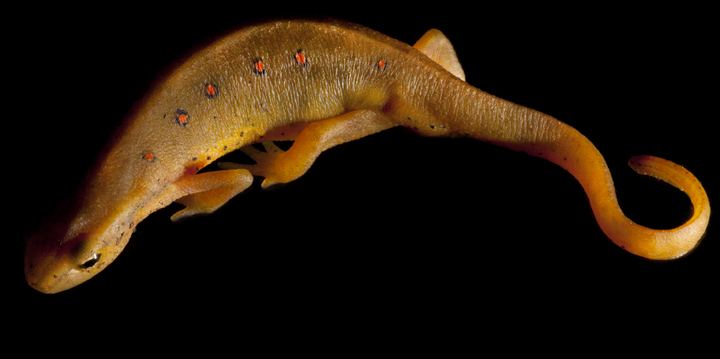
Red Spotted Newt (Notophthalmus viridescens)
Colleen Manley

The red spotted newt (Notophthalmus viridescens) is one of four subspecies of the eastern newt. This species’ name derives from the numerous red spots encircled by black rings that can be found situated along the length of its back. The number of spots can vary; an individual newt can have up to 21 spots. Eastern red spotted newts are a common salamander species of eastern North America. They can be found in locations as far south as Alabama and Georgia, and as far north as Southern Canada. The average life span is typically 10-20 years.
Red spotted newts exhibit a very complex and highly unique life cycle. Throughout their lives they undergo two phases of metamorphosis. As many as 200-400 eggs are laid in the spring and are most commonly attached to submerged aquatic vegetation. The incubation period for red spotted newts is normally between three to four weeks. Upon hatching larvae exhibit a brown-green color and possess a set of gills that allow them to be fully aquatic and remain in their pond habitat. This stage lasts approximately two months.
During the next stage of development, the terrestrial red eft, red spotted newts shed their gills and develop lungs. This stage may last between two and seven years. This time period allows the newts to become more mature, and to grow to approximately two to three inches (5 to 7.4 cm). Visibly at this stage, a bright orange-red coloration is displayed. This coloration serves as a warning to predators of the toxicity of their skin in this stage of life.
During the final stage of a newt’s life cycle, adult red spotted newts become more aquatic than the previous eft stage. At this point in their process of maturation, the orange-red coloration from the eft stage disappears and is replaced by an olive green-brown background. This characteristic is accompanied by an orange-yellow underside freckled with many small black spots. Its red spots and black halos are maintained along its dorsal side. At this stage a more compressed, and much more powerful, tail is developed. This assists in navigating through their aquatic environment.
The compressed, enlarged tail is the last physical characteristic to mature, which can remain in the eft stage physically for several years. This may occur if a newt does not have proper exposure to a large enough body of water. Upon complete maturation, an adult red spotted newt can be expected to be as large as five to six inches (12.7 to 15.2cm) in length. This species of newt is generally regarded as the strongest of all newts in North America and is the easiest kept pet of all newts.
All subjects used in this article were photographed in the previously mentioned “transformation” phase before complete metamorphosis into an adult red spotted newt.
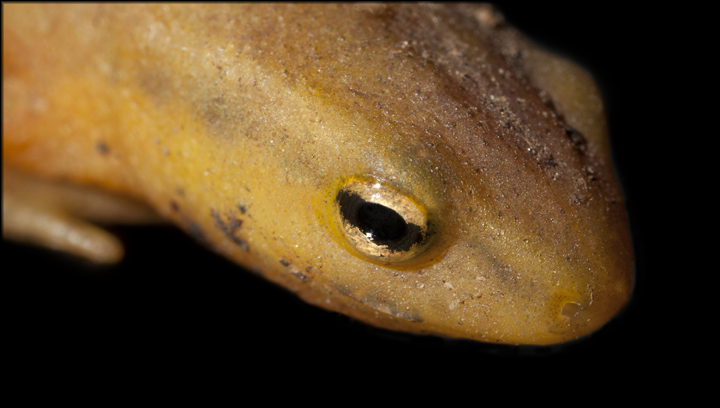
This image illustrates the red spotted newts' small eyes and horizontal pupils.
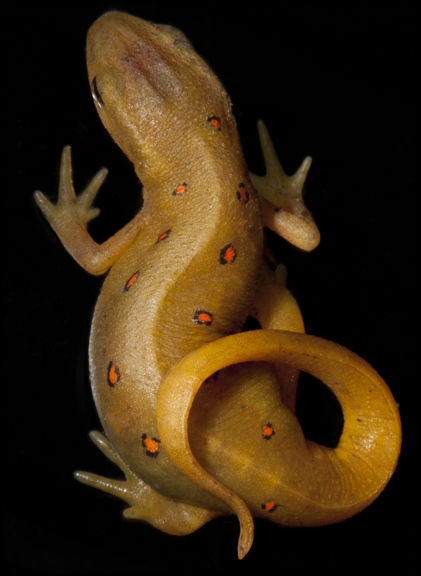
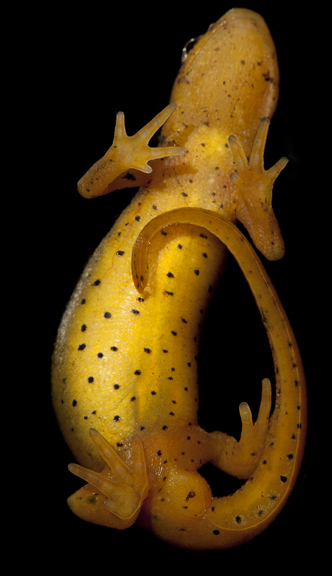
These corresponding views show the red spots and black halos found on the dorsal side, as well as the black speckled ventral side. The ventral view also shows the red spotted newts' four toes on the front legs and five toes on the hind legs.
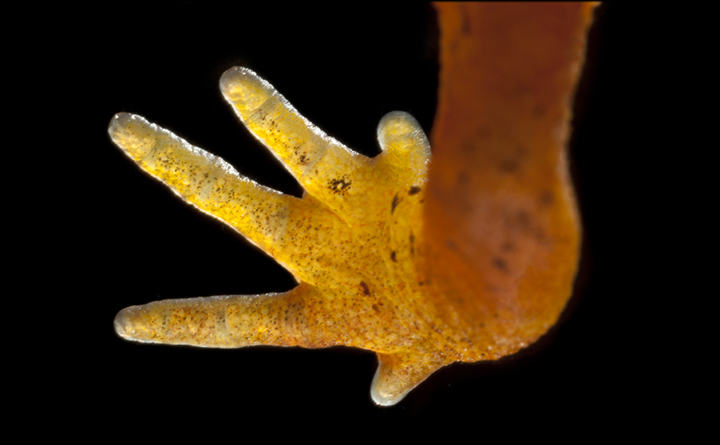
Close-up transilluminated view of a single hind foot.
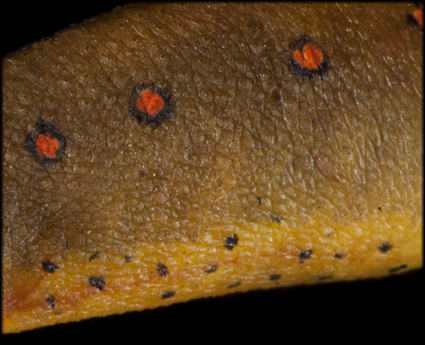
Close-up view of dorsal versus ventral sides.
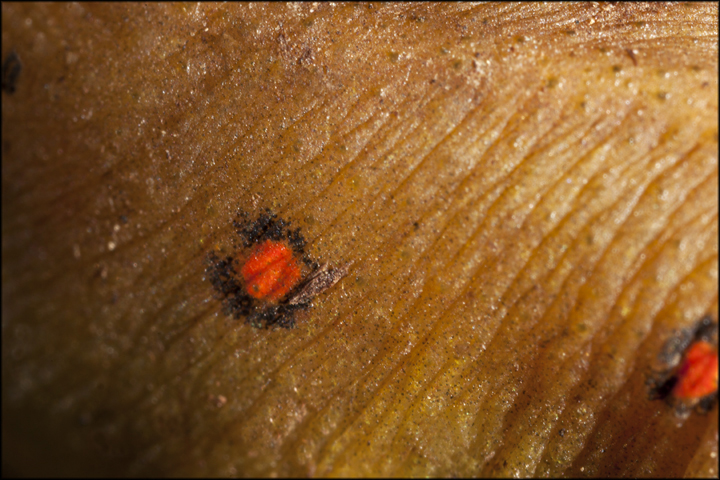
Close-up view of a single red spot and the surrounding black area.
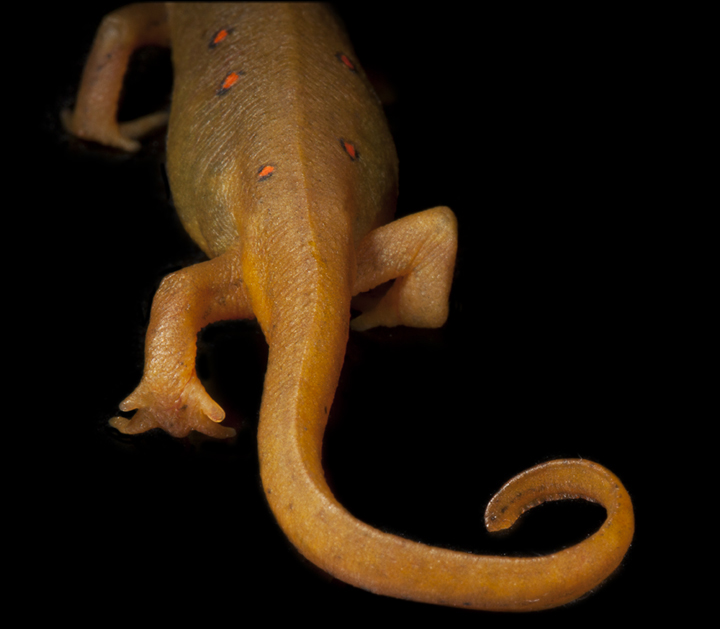
These views illustrate the semi-compressed tail that is common during the transformation stage.
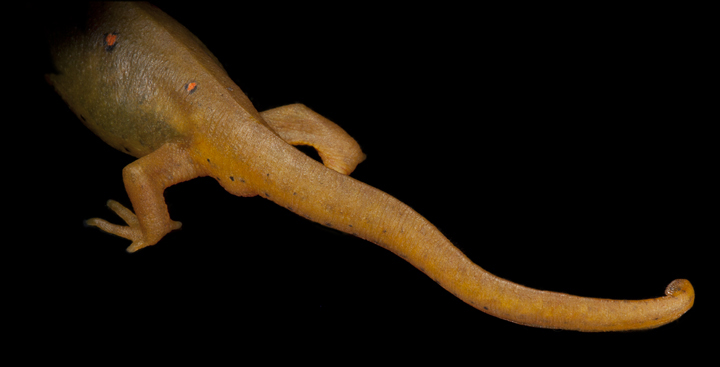
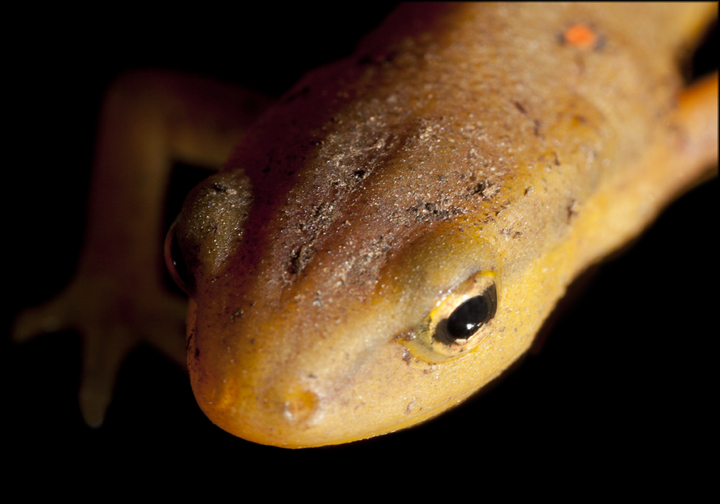
This image depicts the presence of two ridges located on top of the head. This characteristic sets newts apart from other salamanders and is strictly unique to newts.
Camera Technique:
All subjects were photographed live using a Canon 5D Mark II equipped with a fiber optic flash unit. All images were created utilizing either a Canon 100mm f/2.8 macro lens, or a Canon MP-E 65mm f/2.8 1-5x macro lens.
Author Biography:
Colleen is currently a fourth year student in the Biomedical Photographic Communications program at Rochester Institute of Technology, expecting to graduate in May 2011. Following graduation, she intends to pursue a career in an area of medical/surgical photography or research photography.
Contact Info: chm8903@gmail.com